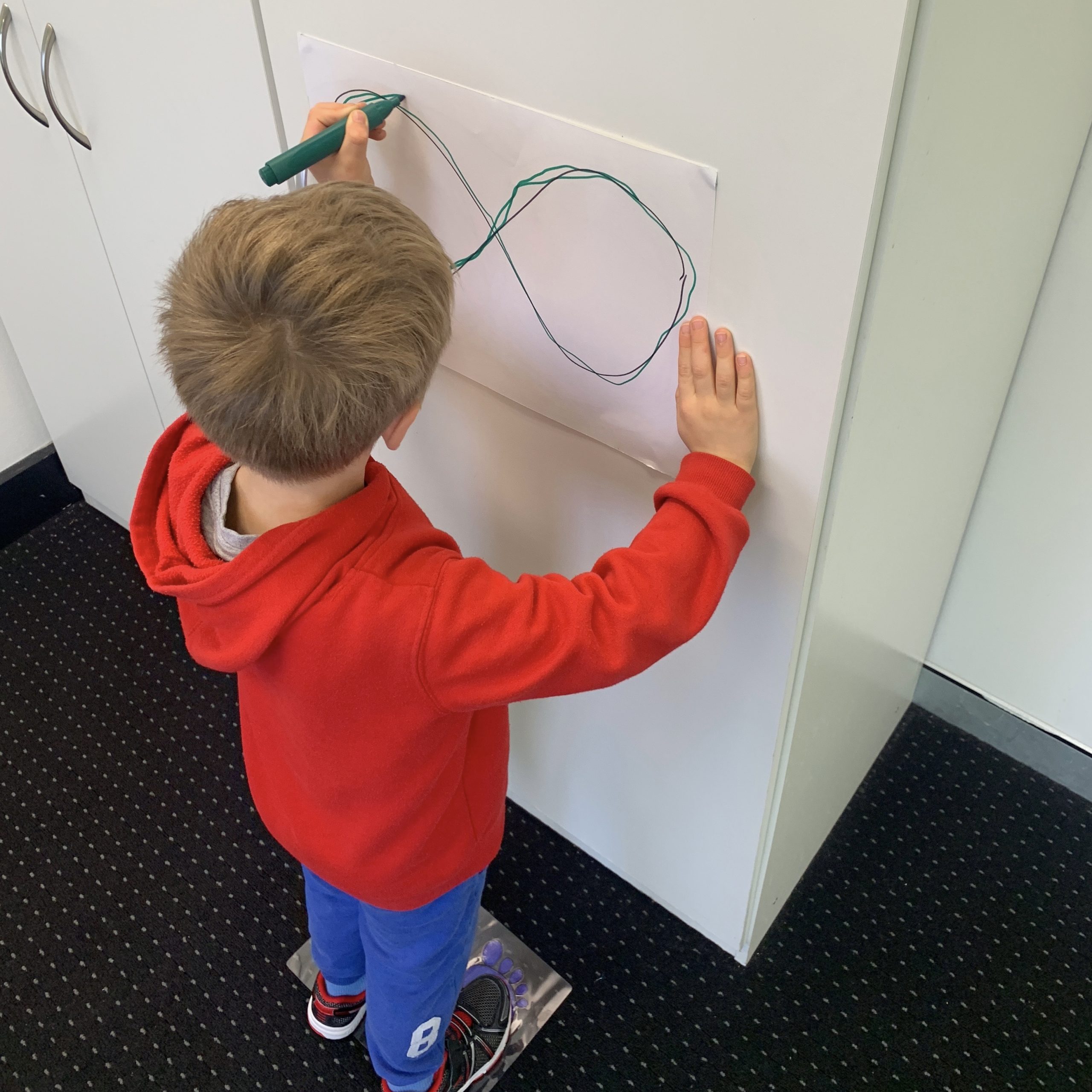
Understanding Hand Dominance in Children: Expert Occupational Therapy Insights from Bondi Junction and Mascot
Hand dominance plays a key role in a child’s overall motor development, and understanding it can help parents support their child’s growth effectively. Our experienced Occupational Therapists at OneOnOne Children’s Therapy in Bondi Junction and Mascot regularly assess and support children in developing strong hand dominance, which is essential for daily tasks like writing, eating, and dressing. Here’s a detailed guide on hand dominance, how it develops, and why it’s crucial for your child’s motor skills.
What is Hand Dominance?
Hand dominance refers to the hand that becomes more skilled and comfortable for everyday tasks, such as writing or throwing. Typically, children develop a preference for either their right or left hand, with the non-dominant hand assisting in tasks. A small percentage of children are ambidextrous, meaning they can use both hands equally well. The development of hand dominance is a natural part of motor development, and the right guidance from an Occupational Therapist can help ensure your child develops strong, functional hand skills.
How Does Hand Dominance Develop?
Early Signs: In the early months, babies use both hands equally to explore. However, parents may notice a slight preference for one hand when reaching for toys or food. This is an early sign of developing hand dominance.
Toddler Years (Ages 2-3): During these years, children start showing a preference for one hand more consistently. Activities like drawing or eating provide clues about which hand may become dominant.
Preschool Age (Ages 4-5): By this age, hand dominance is usually clear. Children rely more on their dominant hand for fine motor activities, such as colouring, cutting, and beginning to write. Our Occupational Therapists in Bondi Junction and Mascot work closely with children at this stage to ensure healthy motor development and hand preference.
Why is Hand Dominance Important?
- Skill Development: Consistently using one hand helps refine fine motor skills, like writing, buttoning clothes, and tying shoelaces. A dominant hand leads to more precise control.
- Brain Development: Hand dominance is linked to brain development. The dominant hand is controlled by the opposite hemisphere of the brain, which helps improve coordination and motor planning.
- Efficiency and Independence: A dominant hand allows children to perform tasks more efficiently and with greater confidence. This contributes to their independence in everyday activities.
Encouraging Healthy Hand Dominance
Our Occupational Therapists focus on creating opportunities for children to develop strong hand dominance through targeted activities and assessments. Here are some strategies you can try at home:
- Observation: Monitor your child’s preferences during activities like eating, drawing, and building blocks. Understanding which hand they naturally favour can help you support their development.
- Provide Opportunities: Encourage activities like drawing, cutting, and playing catch. These exercises promote hand strength and coordination. Our Occupational Therapists in Bondi Junction and Mascot often recommend activities that strengthen fine motor skills in a fun and engaging way.
- Avoid Pressure: It’s important not to force a child to use a particular hand. Letting hand dominance develop naturally ensures better coordination and motor skills.
- Use Both Hands: Include activities that encourage the use of both hands. Bilateral coordination exercises, such as playing with playdough or clapping games, help ensure the non-dominant hand remains strong and capable.
Fun Activities to Promote Hand Skills
- Drawing and Colouring: Encouraging your child to draw and colour helps develop fine motor skills and improves hand-eye coordination.
- Cutting with Scissors: Using child-safe scissors to cut paper strengthens hand muscles and promotes precise control. This is an activity often integrated into Occupational Therapy sessions.
- Building with Blocks: Playing with blocks enhances both hand strength and coordination.
- Playdough Fun: Rolling, squeezing, and shaping playdough is an excellent way to strengthen hand muscles.
- Throwing and Catching: Playing catch helps with hand-eye coordination and builds strength in both hands.
Why Some Children Don’t Develop Hand Dominance
Children with weaker finger and hand muscles may struggle to establish a dominant hand. If a child fatigues easily, they may switch hands during fine motor tasks like writing or cutting. This could be a sign that they need support from an Occupational Therapist.
Some children also struggle with crossing the midline, meaning they have difficulty reaching across their body to perform tasks. This often results in switching hands halfway through an activity, such as colouring. If this is the case, an Occupational Therapy assessment can help identify underlying issues and provide a targeted intervention plan.
What to Do If Your Child Hasn’t Developed Hand Dominance
If you notice your child switching hands frequently or struggling with fine motor tasks, it may be time to consult an Occupational Therapist. At OneOnOne Children’s Therapy, our team in Bondi Junction and Mascot specialises in helping children with hand dominance and fine motor skills through personalised Occupational Therapy programs.
We’re Here to Support You
At OneOnOne Children’s Therapy, we believe that every child deserves the opportunity to grow and thrive. Our clinics in Bondi Junction and Mascot provide a stimulating and supportive environment where children can work on building hand dominance and motor skills. Through a combination of innovative therapy techniques and fun activities, we aim to support each child’s unique developmental needs.
Reach Out for Support
If you’re concerned about your child’s hand dominance or motor skill development, contact OneOnOne Children’s Therapy. Our expert Occupational Therapists in Bondi Junction and Mascot are here to help. Our therapists are AHPRA registered.
📞 Call us at (02) 8065 7837
✉️ Email us to book a consultation
Let’s work together to support your child’s development and help them reach their full potential!
